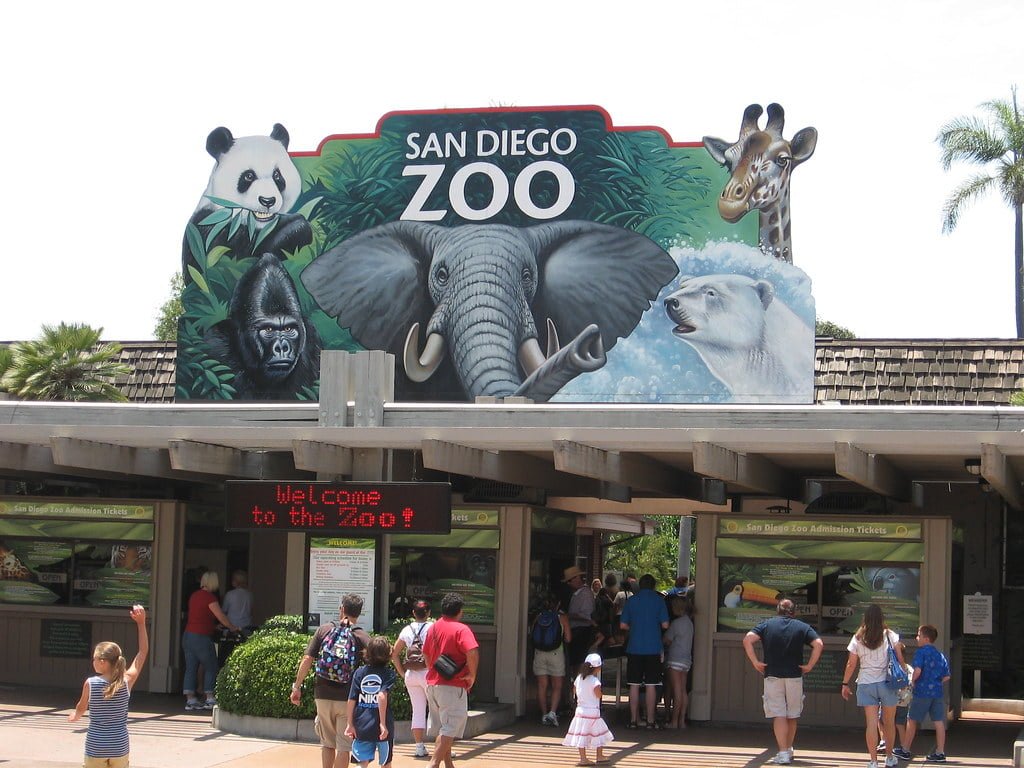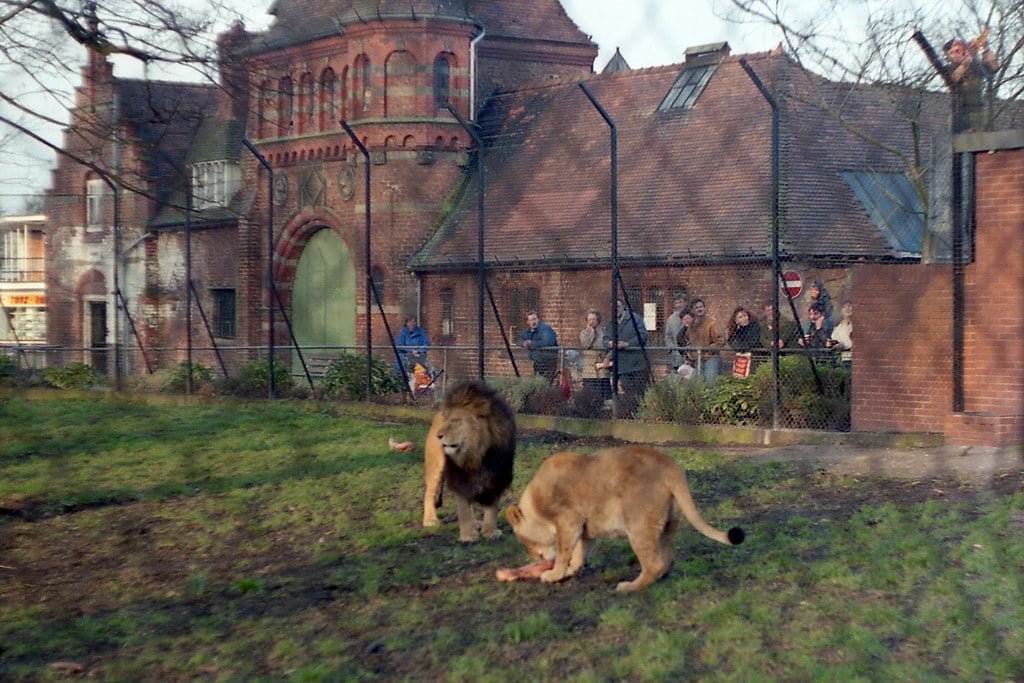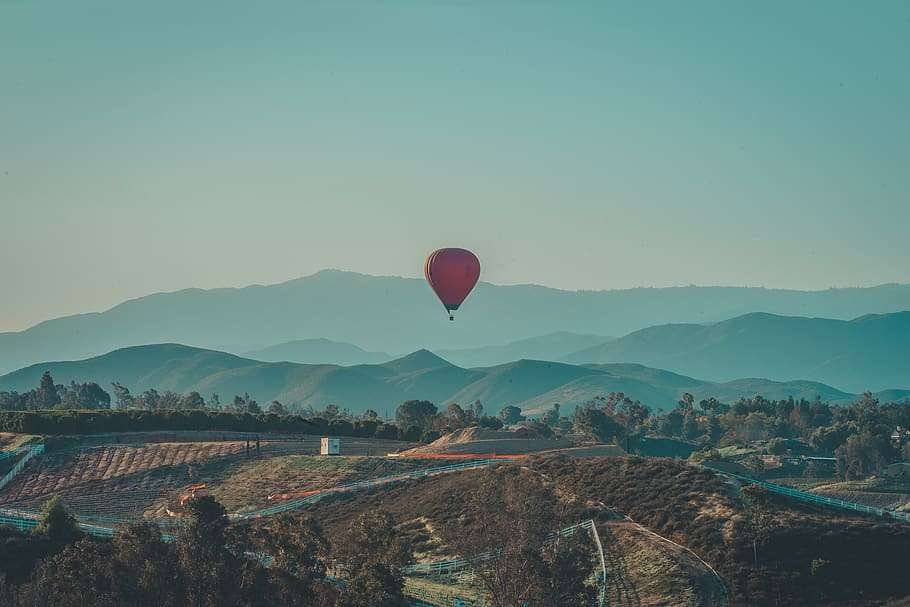Although zoos can be divisive, many offer the chance for individuals to gain knowledge about the world around them and contribute to preserving essential species for future generations. However, it’s crucial to ensure the zoo you visit is as ethical as possible before booking a trip. Ensure the most beautiful zoo in the world visit feature instructional activities, support research projects that help endangered species, or have release programs that help animals return to the wild. Check out the Association of Zoos and best aquariums in the world (AZA) and its list of AZA-accredited locations if you need assistance getting started with your research. These are the top 20 zoos that put in much effort to improve human and animal welfare.
top ranked zoos in the world
San Diego Zoo — San Diego, California

One of the greatest zoos in the world is widely acknowledged to be the San Diego Zoo. Established in 1916, the zoo covers an area of 100 acres and accommodates around 12,000 uncommon and threatened species of animals. Visitors can participate in various educational activities, knowing that a percentage of their ticket purchase supports conservation initiatives. zoo rankings in the world.
Chester Zoo — England, U.K.

Another prominent facility with an active conservation program is the Chester Zoo, which also happens to be the most popular zoo in the United Kingdom. With almost 20,000 animals under care, the zoo aims to inform visitors about its conservation initiatives and personal action opportunities.
Tiergarten Schönbrunn — Vienna, Austria
The distinction of being the oldest zoo in the world belongs to Vienna’s Tiergarten Schönbrunn. In addition, it is among the top zoos in the world because of its extensive program for protecting species in the wild, several unique animal exhibits, and its captive breeding program that is saving dozens of endangered species.
Alaska Zoo — Anchorage, Alaska
For good reason, the Alaska Zoo is one of the smaller zoos on this worldwide list. The Alaska Zoo is home to various native species, such as moose, hawks, harbor seals, brown bears, and bald eagles. It is an organization with 501(c)3 registration committed to advancing the preservation of Arctic and sub-Arctic wildlife.
Toronto Zoo — Toronto, Canada
The enormous, naturalistic habitats that the animals at the Toronto Zoo enjoy are made possible by its vast 710 acres. And that’s fortunate because it’s home to almost 5,000 animals. In-depth species recovery efforts at the zoo include captive breeding species like the black-footed ferret and the Vancouver Island marmot.
National Zoological Gardens — Pretoria, South Africa
The biggest zoo in South Africa is the National Zoological Gardens, popularly called the Pretoria Zoo. Moreover, it is the only one with national standing. The Most Beautiful Zoo In The World. mission is to “champion the exploration, conservation, sustainable use, appreciation, and enjoyment of South Africa’s vibrant biodiversity for all South Africans.” Thousands of animals live there, some highly endangered, such as black and white ruffed lemurs.
Lincoln Park Zoo — Chicago, Illinois
One of the few zoos in North America that still allows everyone free entrance is the Lincoln Park Zoo, which is also among the oldest. Yes, it is correct. For free, anyone can visit and greet the park’s animals, which include pygmy hippos and African lions. But while you’re there, be sure to spend a little time learning about the zoo’s outstanding efforts on global conservation.
Singapore Zoo — Singapore
With over 4,000 creatures dispersed around the verdant jungle, the Singapore Zoo is a zoo that should be noticed. Even though the zoo’s animals—ranging from sloths to African penguins—are fascinating, its educational activities make a difference, especially for families with little children.
Taronga Zoo — Sydney, Australia
Situated just across Sydney’s city center, the 69-acre Taronga Zoo is home to various wildlife species. Thus, besides visiting its 350 distinct species, you can enjoy the breathtaking scenery. With its many conservation and breeding initiatives, this zoo also runs the local Big City Birds project, allowing people to report sightings using an intuitive app.
Bronx Zoo — New York City, New York
The Bronx Zoo first opened for business in 1899. Across its 265 acres, it is home to over 10,000 creatures from 700 species. Additionally, the zoo has been reintroducing animals like the American bison to the wild and conducting research and breeding to rescue endangered species for almost 120 years.
Jersey Zoo — Jersey, U.K.
By reclaiming wild areas, the Jersey Zoo has contributed to conserving endangered species and their habitats for over 60 years. On a more local level, the park’s distinctive camping program allows visitors to see the varied species and even spend the night there.
Henry Doorly Zoo — Omaha, Nebraska
Thanks to its many habitats, the Henry Doorly Zoo allows visitors to learn about creatures on land, in the water, and in the air. See a gorilla family, vibrant Caribbean fish, sea lions, reptiles, and more in one location when you visit. When visitors leave, they will have contributed to the organization’s extensive conservation activities, including its conservation genetics study.
Smithsonian’s National Zoo — Washington, D.C.
The National Zoo of the Smithsonian offers more than just a place to see animals. Yes, you can see some of its cute animals. Still, it also leads the globe in conservation efforts and is a part of the world’s largest museum and research complex, the Smithsonian Institution, so it has the means to benefit the animal kingdom. (Nevertheless, the cheetah cubs are adorable.)
Edinburgh Zoo— Edinburgh, Scotland
More than 2,500 creatures worldwide call the Edinburgh Zoo home, including the country’s only sloths, a group of penguins, and the renowned giant pandas. In addition, it offers a wealth of educational events for guests of all ages, such as school programs and chances to interact with the conservation team.
Melbourne Zoo — Melbourne, Australia
Another fantastic location to visit your favorite animals and get up close and personal with some species is the Melbourne Zoo charity, which offers an exclusive animal encounters program. Through the program, visitors may get up close and personal with seals, purchase tickets for before-hours access to the animals, and even get a behind-the-scenes peek at the elephant habitat.
Berlin Zoological Garden — Berlin, Germany
With its opening in 1844, the Berlin Zoological Garden boasts the world’s widest species diversity. Visit the exhibit to witness over 20,000 creatures spanning over 1,300 species, featuring a few polar bears. The zoo also has a strong conservation program, which includes its global species conservation efforts that support the preservation of rare and endangered animals globally.
Wellington Zoo — Wellington, New Zealand
The Wellington Zoo was the first zoo in New Zealand and the oldest conservation initiative in the region. Visitors may see the chimpanzees, snow leopards, and even some unique kiwi birds at the zoo. In addition to learning activities, visitors can have up-close interactions with giraffes, sun bears, and other animals.
Cincinnati Zoo — Cincinnati, Ohio
The second-oldest zoo in the United States, the Cincinnati Zoo, was founded as the Zoological Society of Cincinnati in 1873. Many different animal species can be found there, ranging in size from enormous animals like black rhinos to little ones like blue death-feigning beetles. It is still a popular tourist site.
Basel Zoo — Basel, Switzerland
With 27 acres of land, the Basel Zoo is home to around 5,000 animals. It can be challenging to stay on top of things because the zoo also houses a reasonably extensive breeding program that keeps endangered creatures from becoming extinct. Additionally, a percentage of each ticket purchased supports the program’s continuation to save even more species.
Houston Zoo — Houston, Texas
One of the most well-liked zoos in the country is the Houston Zoo. Almost 2 million people visit it annually to witness its collection of over 6,000 creatures. All those visits contribute to its worldwide conservation efforts and regional initiatives to save native species from extinction, such as the Houston toad.

